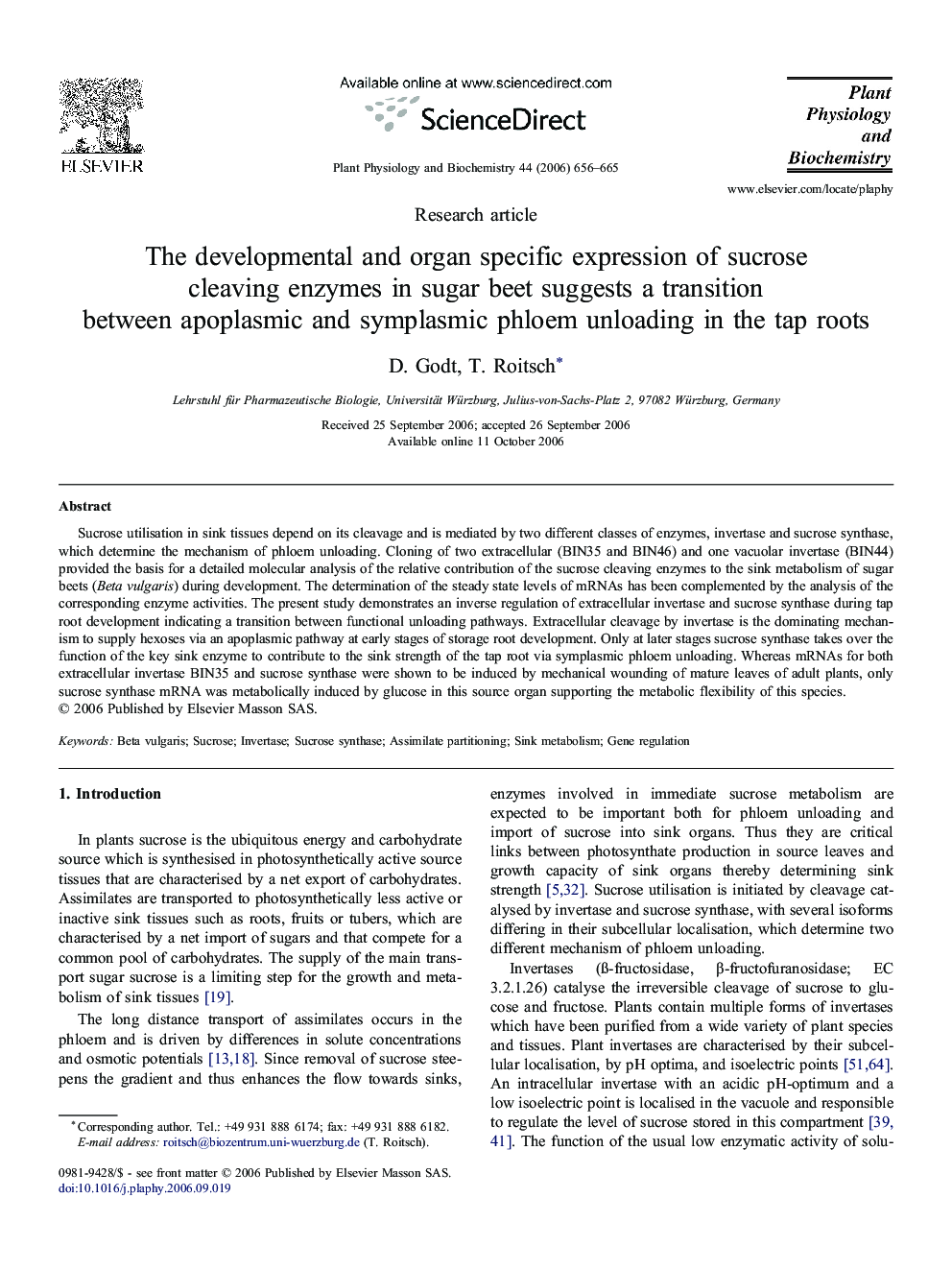| Article ID | Journal | Published Year | Pages | File Type |
|---|---|---|---|---|
| 2016605 | Plant Physiology and Biochemistry | 2006 | 10 Pages |
Abstract
Sucrose utilisation in sink tissues depend on its cleavage and is mediated by two different classes of enzymes, invertase and sucrose synthase, which determine the mechanism of phloem unloading. Cloning of two extracellular (BIN35 and BIN46) and one vacuolar invertase (BIN44) provided the basis for a detailed molecular analysis of the relative contribution of the sucrose cleaving enzymes to the sink metabolism of sugar beets (Beta vulgaris) during development. The determination of the steady state levels of mRNAs has been complemented by the analysis of the corresponding enzyme activities. The present study demonstrates an inverse regulation of extracellular invertase and sucrose synthase during tap root development indicating a transition between functional unloading pathways. Extracellular cleavage by invertase is the dominating mechanism to supply hexoses via an apoplasmic pathway at early stages of storage root development. Only at later stages sucrose synthase takes over the function of the key sink enzyme to contribute to the sink strength of the tap root via symplasmic phloem unloading. Whereas mRNAs for both extracellular invertase BIN35 and sucrose synthase were shown to be induced by mechanical wounding of mature leaves of adult plants, only sucrose synthase mRNA was metabolically induced by glucose in this source organ supporting the metabolic flexibility of this species.
Related Topics
Life Sciences
Agricultural and Biological Sciences
Plant Science
Authors
D. Godt, T. Roitsch,
